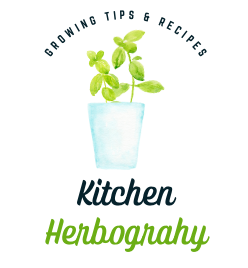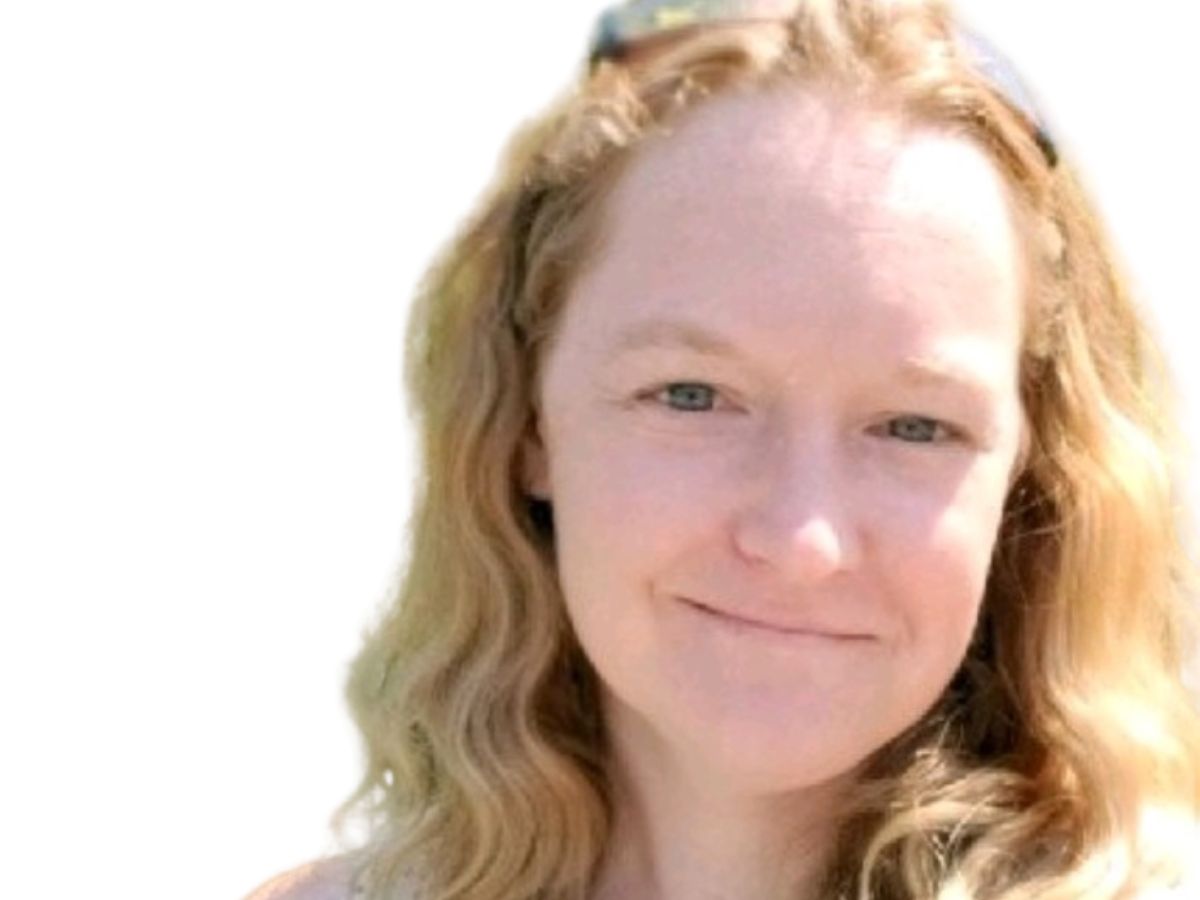As an Amazon Associate I earn from qualifying purchases. This website also participates in other affiliate programs and may earn commissions if you shop through the links used on this website.
(This article was originally published on July 18, 2022 and was last updated on September 4, 2022)
Do you want a fresh and abundant supply of homegrown basil, year after year? The best way to make this happen, and to keep your basil habit affordable, is to harvest seeds from your basil plants. In this article, I’ll share what that means, and how to harvest basil seeds from your current plants, and instructions for saving basil seed until you need it!
One of the most popular annual herbs, basil graces many kitchens. It also is a predominant feature in gardens of every size, from the small windowsill herb collection to the incredible spaces master gardeners create. It is a beautiful and aromatic herb and offers a flavorful addition to numerous dishes.
Basil is also relatively easy to grow, making it an approachable starter herb for budding gardeners.
One of the quickest ways to begin your basil growing adventures at home is to purchase a start from your local nursery. While this is a convenient and accessible option, buying starts can quickly get expensive.
Thankfully, there is a way you can abundantly grow basil and save money. All you need to do is harvest and save seeds from your existing basil plants (and their beautiful flowers), and sow those seeds next year, to grow new basil plants for free.

Although harvesting basil seeds may sound intimidating, it’s a fairly straightforward process. Below, I’ll walk you through the steps to follow to collect seeds and save basil seed for planting and other uses!
Flowering and Seed Production
Before diving straight into how to harvest basil seeds, let’s consider some helpful basil basics.
Basil is an annual herb, meaning it’s meant to be grown for a season before developing seed-containing flower stalks. Left to its own devices, a basil plant will complete its natural lifecycle of flowering, spreading seeds, and then dying, with new plants replacing it the following growing season from the seeds of the previous year.
Basil Flower Stalks and Flower Heads
Without regular harvesting to encourage growth, basil plants will develop small flowering bunches at the top of the plant. If you don’t want your basil to go to seed, you should pinch those off as soon as you see them. Regular pruning and pinching back the plants flower will encourage the growth of large, delicious leaves.
So delicious….
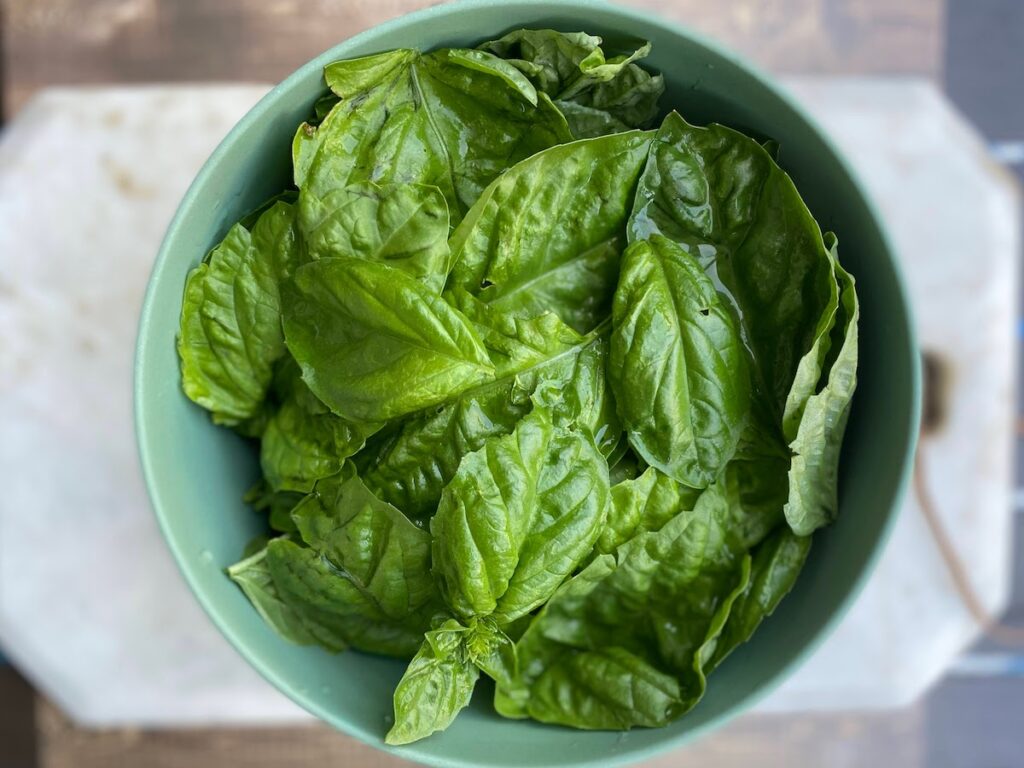
However, if you do want to collect your own seeds, leave those flower heads on the plants.
Most of the time, basil flowers toward the end of the season, providing ample time for you to harvest fresh basil leaves over the course of the growing season. In hot and dry environments or seasons, however, they may flower early, allowing you time for a second planting.
As the flowers develop, they attract beneficial pollinators and add a gorgeous hue to your garden.
The flower on the lettuce leaf basil plant pictured below is tiny, but you can imagine how beautiful it will be if the plant is covered in these lovely white flowers!
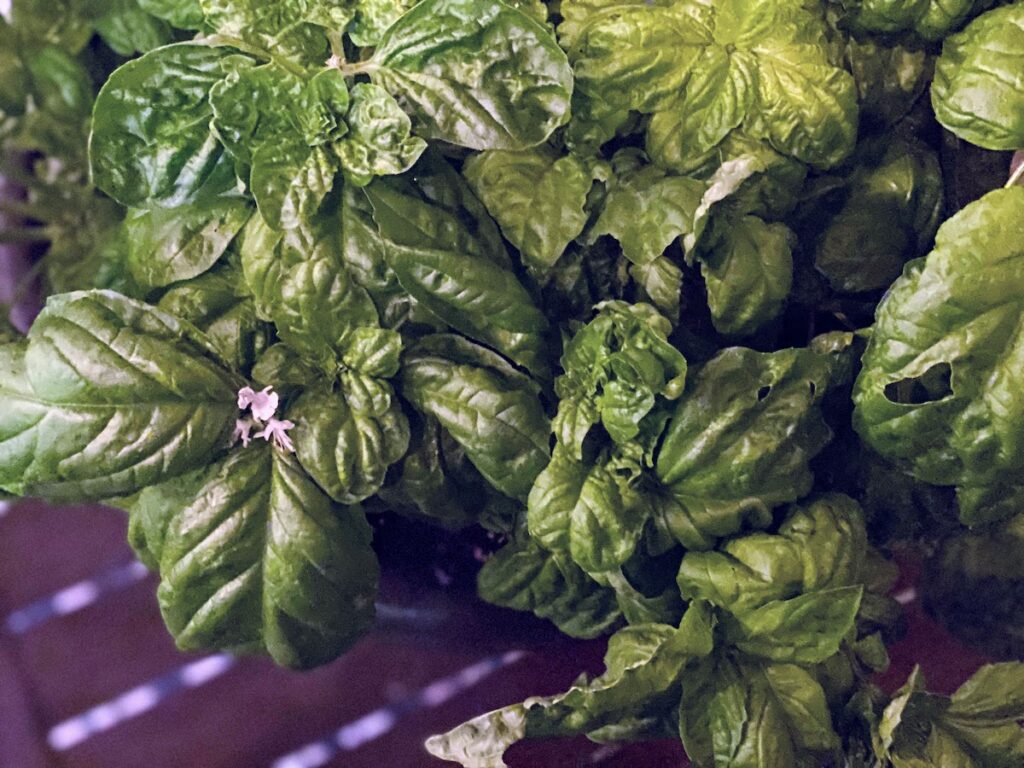
Towards the end of their life, the flowers will start drying out and ultimately drop off the basil plant. This usually happens at the end of the growing season, as you head into fall or winter, depending on where you are.Those flowers are actually little seed heads, and there are hundreds per plant.
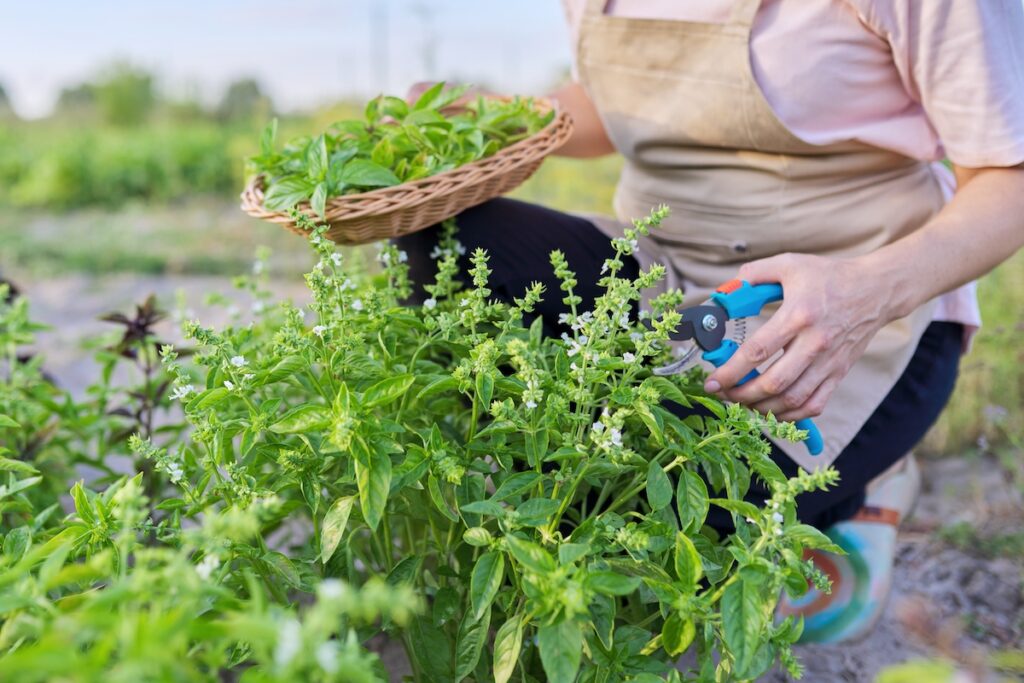
Choosing the Right Basil Plants for Saving Seeds
Not all basil plants are created equal.
Some types of basil grow far better in specific environments than others: for example, Thai basil is best suited to the warm climates of southeast Asia. Purple basil loves direct light to get the most vibrant coloring. Lettuce leaf basil, cinnamon basil, and Mrs Burn’s lemon basil is pretty easy for temperate gardeners to grow successfully as annuals.
Beyond that, however, some plants will simply be hardier than others. When you buy seeds from a seed company or even starts from your local nursery, you never know how resilient your plants will be. (Or even how delicious the leaves will prove to be).
Finally, you don’t want to collect seeds from diseased plants. Just as you’d look for a healthy and well-cared-for basil plant if you were to take a cutting for a mother plant, you should also look for healthy plants before collecting seeds. Look for healthy leaves that are free from obvious brown spots, wilting and drooping leaves that curl inwards, black patches (that aren’t genetic coloring, such as a few purple basil genes that snuck in!), white spots, overall yellowing of the plant, holes in the leaves, etc.
By saving your own basil seeds, you have the luxury of selecting saving basil seed only from the plant (or plants) that have the best flavor or develop the largest leaves.
Allowing only a few plants you’ve selected to go to seed is a strategic selection process. After a few seasons, you’ll have a unique heirloom variety that’s custom adapted to your own growing environment and herb garden.
How to Harvest Basil Seeds to Get Fresh Herbs Unique to Your Herb Garden
Now comes the fun part, collecting your own basil seeds! The simple four-step process detailed below will ensure you have an ample supply of basil that’s suitable to your growing environment for as long as you want.
Different Ways to Harvest Seeds from Basil Plants
When it comes time to harvest basil seeds, there are really two different methods to harvest seeds once you’ve decided to stop pinching the flower buds away.
The first option is to allow the flowers to dry out on the plant, which takes up to 12 weeks. Check your basil flower buds diligently during this period, as the flowers will dry out at different rates, which also depends on access to direct sun and heat during this period. When watering your basil plant during this period, make sure you only water the base of the plant, near the soil, to not upset the drying process. Once they are completely dry, they will drop off the basil plant and scatter the seeds across your garden or in whatever container or pot you’re growing in. To save seeds before scattering across your garden, you’ll need to catch them and remove them from the plant before they drop off.
Alternatively, you can harvest the stem containing the basil flowers and seed heads before they start drying out too much. Using scissors or snips, cut far enough down the stem to avoid disturbing the flowers.
Lay them out, or bundle them up for hanging. Then, allow them to air dry for a few days to a week. Be sure to place something underneath to catch any rogue flowers that may drop.
Getting the Seeds Out of the Seed Heads
After drying, the time has come to harvest your basil seeds!
Place the dried flowers into a paper bag and gently crush them to release the seeds from the seed pods. A rolling pin works well for this.
Alternatively, you can process the individual flowers by hand, rubbing each between your fingers. If you choose this route, put a container underneath to catch everything.
Run your flowers and seeds through a fine mesh sieve with a shallow tray or bowl underneath. This allows the small seeds to move through while catching the plant material you don’t want.
After collecting the seeds in a try, bowl or other type of container, sort them by hand to remove any residual plant matter.
Congratulations: you’ve now harvested your very own basil seeds!

Prepare for your Seeds for Storage
Before you store your basil seeds, you need to prep them properly.
Both moisture and air are enemies of your seed collection. After separating your basil seeds from the plant matter, dry them out again. Leave them on a plate for a day or two, with a paper towel underneath to wick up any residual moisture.
When you choose your storage container, do your best to remove as much air as possible. If you plan on storing your basil seeds for more than a year, you can use a vacuum sealer for extra protection.
Storing Your Harvested Basil Seeds
Your newly harvested basil seeds will last up to five years if properly stored. To get the best life out of them, put your basil seeds in an envelope or a glass storage container. Be sure to label and date the container or package. You will want to rotate your basil seeds and always use the oldest ones first when it comes to the next planting season.
The ideal storage location is dark and cool – such as in a cabinet or under your bed. Keep your seed stash away from heat sources. Prolonged exposure will damage your seeds and impact future germination rates.
Additionally, you want to avoid storing your seeds in the refrigerator. Fluctuations in humidity levels are damaging and may encourage mold or mildew to grow on your basil seeds.
What to Do After You Save Basil Seeds?
Since a single basil plant will provide you with hundreds of precious tiny seeds, you will likely end up with an overabundance of basil seed.
So what exactly do you do with all those seeds?
The easiest thing to do is replant them! If you were lucky enough to get seeds early in the season, you might have time to replant a fresh batch of basil. But since you are now swimming in new basil seeds, you can also keep fresh basil growing inside all year!
Another idea is to give them to friends and family. You can create small packets in a mesh bag and add a tag with brief growing instructions. If the recipient is new to gardening, this will help them learn how to plant basil from seed.
Finally, you can try them in recipes, such as a basil seed pudding or a drink using basil seeds.
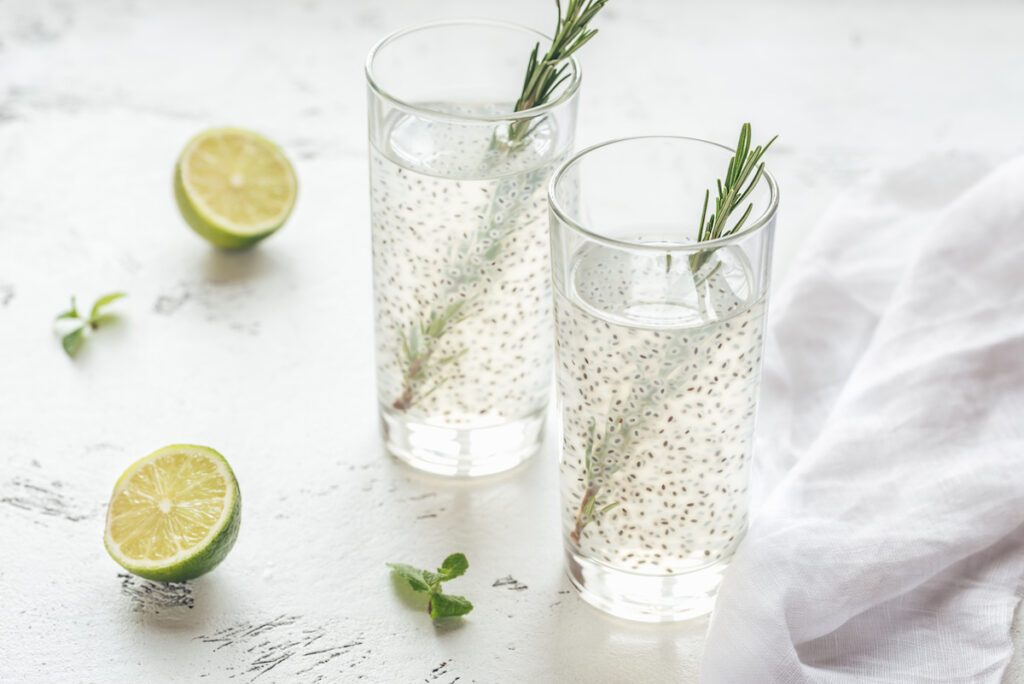
Harvesting seeds from your own basil plants is easy and rewarding. Plus, you will never run out of this wonderful herb again!
Jennifer is a writer, Nutritionist, and Herbalist who loves all things food. She grows basil alongside other herbs and edible flowers in her garden. Herbs also hold a prominent space in her aerogarden. She enjoys experimenting in the kitchen, finding fun and unique ways to incorporate herbs into daily life. Jennifer is passionate about helping others discover the joy of quality food. And she loves to bring her two kids along on endless food adventures!
